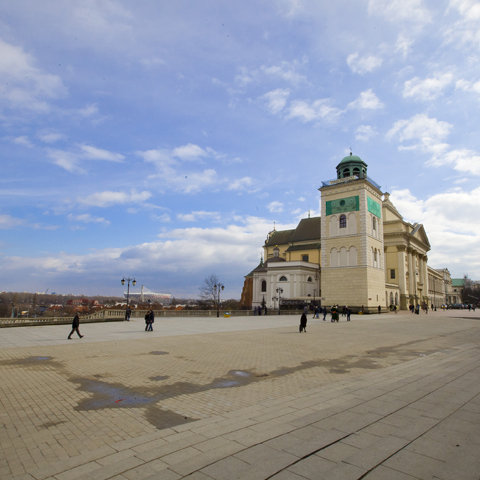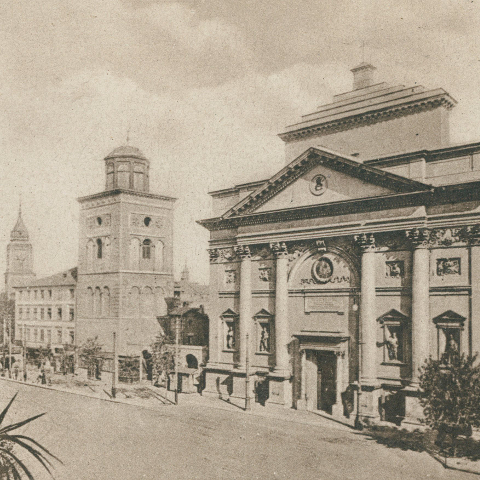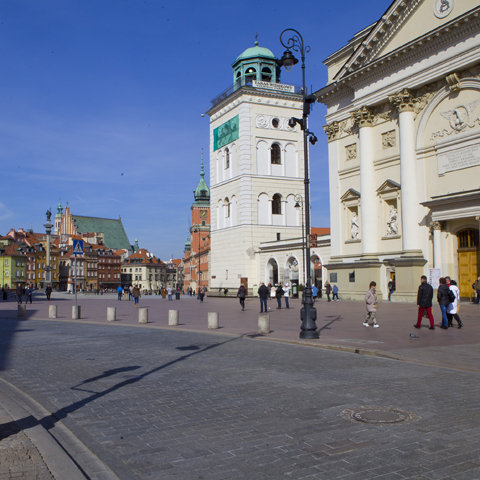Composers / Fryderyk Chopin / Places catalog
Warsaw Conservatory
In the autumn of 1826, Fryderyk Chopin began studying at the Main School of Music, which had recently been attached to the University of Warsaw. ‘To this end, I am going to Elsner 6 hours a week to study strict counterpoint. I listen to Brodziński, Bentkowski and other subjects that have anything at all to do with music’.
The vice-chancellor of the Main School of Music at the time was Józef Elsner. Due to disputes with the University over rooms for lessons for undergraduates, the Main School of Music students usually had lessons in his apartment, which was in the Conservatory building.
Ferdynand Hoesick gives a description of these visits, which over time became friendly get-togethers: ‘The Elsners […] lived on the first floor of the Conservatory building on the corner of Marjensztat at the time. So the students of the composer of Męka Zbawiciela [The Passion], Stefani Jan, Wolff Edward, Nidecki Tomasz and Ludwik, Weinert Paweł and Chopin Fryderyk, being extremely frequent guests at the vice-chancellor’s home (for he was not just a teacher, but a friend to every one of them), enjoyed the graciousness and friendship of both the vice-chancellor’s wife and her daughter, Emilia. They obviously enjoyed themselves most with music, as everyone in the group was musical. Playing the piano and singing held pride of place. After all, it should be borne in mind that Mrs Elsner was regarded as a jewel of the Polish Opera, and her extraordinarily musical daughter was similarly blessed with a lovely voice. Moreover, she played very nicely and fluently on the piano. Ludwik Nidecki liked playing four-hands with her so much that they ended up getting married... Anyway, before it came to that, the piano in the Elsners’ salon could often be heard, and one of those who played it most frequently was Chopin, who already enjoyed the reputation of being “the best pianist in town”. As this was a period in which he composed an awful lot, and as he attached a great deal of weight to the opinion of not only his harmony and counterpoint teacher, but also [Elsner’s] wife and daughter, he played everything he composed for them, consulted them and genuinely sought their opinion’.
A particularly celebratory mood held sway on ul. Mariensztat every year when all the highly esteemed teacher’s charges hurried over with their best wishes for his name day. Wishes in verse were usually prepared for St Joseph’s Day, and one of the students or teachers always set them to music. There was then a choral rendition of the song by the students, with Chopin doubtless among them. When Chopin left Warsaw forever, in 1830, his friends sang a similarly versified farewell set to music, this time written especially for him by Prof. Elsner.
In one of his later letters, Chopin defined himself as the ‘most devoted’ pupil of the venerable vice-chancellor, and Franz Liszt, apparently not without reason, claimed in his biography of Chopin that Elsner had bequeathed him ‘the rarest and most difficult skill that can be possessed, namely to always set challenges for himself and to realise that results can only be achieved through patience and hard work’.
The Conservatory building no longer exists. It was situated between St Anne’s and the Royal Castle, roughly where the East-West motorway exit is today.
-

Place where there was the Conservatory. Phot. Waldemar Kielichowski.
-

St. Anna Church and Warsaw Conservatory, postcard from 1939. POLONA.
-

St. Anna Church. Phot. Waldemar Kielichowski.